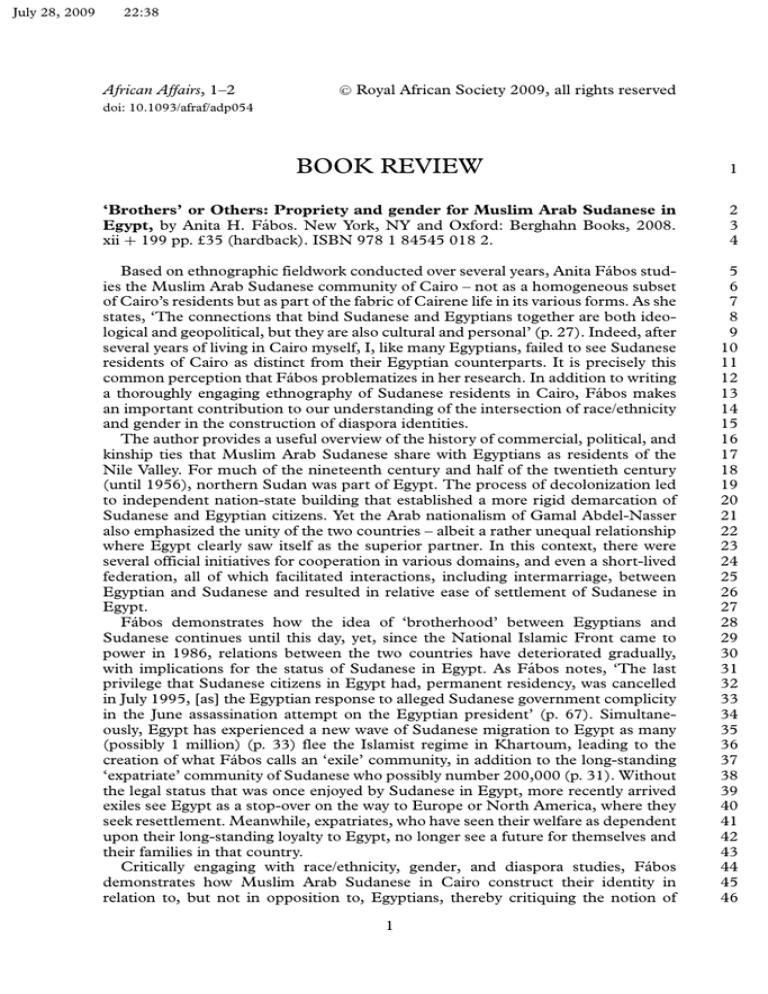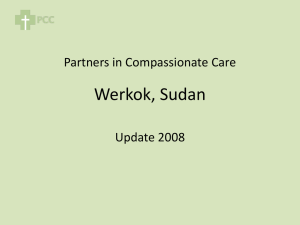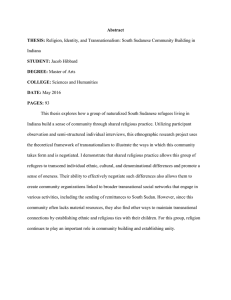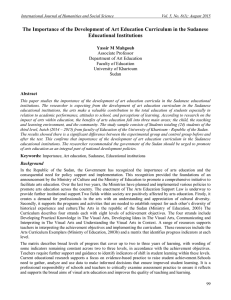
July 28, 2009
22:38
African Affairs, 1–2
C
Royal African Society 2009, all rights reserved
doi: 10.1093/afraf/adp054
BOOK REVIEW
1
‘Brothers’ or Others: Propriety and gender for Muslim Arab Sudanese in
Egypt, by Anita H. Fábos. New York, NY and Oxford: Berghahn Books, 2008.
xii + 199 pp. £35 (hardback). ISBN 978 1 84545 018 2.
2
3
4
Based on ethnographic fieldwork conducted over several years, Anita Fábos studies the Muslim Arab Sudanese community of Cairo – not as a homogeneous subset
of Cairo’s residents but as part of the fabric of Cairene life in its various forms. As she
states, ‘The connections that bind Sudanese and Egyptians together are both ideological and geopolitical, but they are also cultural and personal’ (p. 27). Indeed, after
several years of living in Cairo myself, I, like many Egyptians, failed to see Sudanese
residents of Cairo as distinct from their Egyptian counterparts. It is precisely this
common perception that Fábos problematizes in her research. In addition to writing
a thoroughly engaging ethnography of Sudanese residents in Cairo, Fábos makes
an important contribution to our understanding of the intersection of race/ethnicity
and gender in the construction of diaspora identities.
The author provides a useful overview of the history of commercial, political, and
kinship ties that Muslim Arab Sudanese share with Egyptians as residents of the
Nile Valley. For much of the nineteenth century and half of the twentieth century
(until 1956), northern Sudan was part of Egypt. The process of decolonization led
to independent nation-state building that established a more rigid demarcation of
Sudanese and Egyptian citizens. Yet the Arab nationalism of Gamal Abdel-Nasser
also emphasized the unity of the two countries – albeit a rather unequal relationship
where Egypt clearly saw itself as the superior partner. In this context, there were
several official initiatives for cooperation in various domains, and even a short-lived
federation, all of which facilitated interactions, including intermarriage, between
Egyptian and Sudanese and resulted in relative ease of settlement of Sudanese in
Egypt.
Fábos demonstrates how the idea of ‘brotherhood’ between Egyptians and
Sudanese continues until this day, yet, since the National Islamic Front came to
power in 1986, relations between the two countries have deteriorated gradually,
with implications for the status of Sudanese in Egypt. As Fábos notes, ‘The last
privilege that Sudanese citizens in Egypt had, permanent residency, was cancelled
in July 1995, [as] the Egyptian response to alleged Sudanese government complicity
in the June assassination attempt on the Egyptian president’ (p. 67). Simultaneously, Egypt has experienced a new wave of Sudanese migration to Egypt as many
(possibly 1 million) (p. 33) flee the Islamist regime in Khartoum, leading to the
creation of what Fábos calls an ‘exile’ community, in addition to the long-standing
‘expatriate’ community of Sudanese who possibly number 200,000 (p. 31). Without
the legal status that was once enjoyed by Sudanese in Egypt, more recently arrived
exiles see Egypt as a stop-over on the way to Europe or North America, where they
seek resettlement. Meanwhile, expatriates, who have seen their welfare as dependent
upon their long-standing loyalty to Egypt, no longer see a future for themselves and
their families in that country.
Critically engaging with race/ethnicity, gender, and diaspora studies, Fábos
demonstrates how Muslim Arab Sudanese in Cairo construct their identity in
relation to, but not in opposition to, Egyptians, thereby critiquing the notion of
5
6
7
8
9
10
11
12
13
14
15
16
17
18
19
20
21
22
23
24
25
26
27
28
29
30
31
32
33
34
35
36
37
38
39
40
41
42
43
44
45
46
1
July 28, 2009
22:38
2
AFRICAN AFFAIRS
ethnicities as bounded identities. According to Fábos, ‘Instead of creating a discourse of “otherness” and despite their recognition of Egyptian hegemony . . . Sudanese call upon a mutually held set of beliefs as a way of distinguishing themselves,
and yet also use this very shared discourse to show solidarity with Egyptians, allowing them to maintain a dynamic and deliberately unclear position’ or ‘ambiguous
ethnicity’ (p. 10). These mutually held beliefs concern gendered norms of propriety
(or adab), that is, ‘a loose set of gendered behaviours, norms, and beliefs marking
“proper” social interaction for women and for men’ (p. 4).
Whilst these gendered norms are constructed as though fixed by so-called eternal Arab and Muslim beliefs that are shared with Egyptians, Fábos demonstrates
that beliefs about gender are idealized as a means of creating Muslim Arab Sudanese
identity. As well as this, these norms establish boundary markers amongst Sudanese:
between long-term expatriate residents and more recent exiles. Indeed, such ideals
are almost impossible to live up to in a context of increasing insecurity for Sudanese
in Cairo as a result of their deteriorating legal status and decreasing work opportunities in Egypt, particularly for Sudanese men. This, as Fábos demonstrates, opens up
possibilities for challenging existing gender norms. However, whilst gender roles and
family set-ups are changing, ‘This unstable situation has paradoxically led Sudanese
to place more emphasis on “proper” ways of behaving and being’ (p. 169). In this
sense, the most significant aspect, for me, of Fábos’s book is the way in which she
demonstrates the links between shifting national, regional, and international political realities and the significance of the construction of gender identities in particular
ways, as both a response to and a means of coping with these realities at the level of
the individual.
University of East Anglia
NICOLA PRATT
doi:10.1093/afraf/adp054
47
48
49
50
51
52
53
54
55
56
57
58
59
60
61
62
63
64
65
66
67
68
69
70
July 28, 2009
22:38
Query to Author
STANDARD AUTHOR QUERIES
r
r
r
Please check that the author surnames have been correctly identified by a pink
background. If this is incorrect, please identify the full surname of the relevant
authors.
Figures: Please check all figures are correctly placed, have no missing sections,
and corresponds to figure legend.
Funding: Remember that any funding used while completing this work should
be highlighted in a separate Funding section. Please ensure that you use the full
official name of the funding body.







